Review: Fisheye FIX Aquavolt 7000 video lights
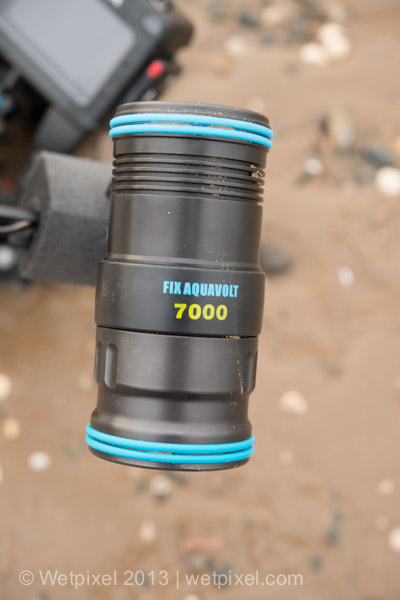
Introduction.
It is no longer a new phenomena that SLR cameras like the Nikon D4 and D800 or Canon 7D and 5D Mk III offer very impressive video recording capabilities. Indeed even the GoPro POV cam can now offer footage quality that is quite acceptable for some broadcast use. The BBC’s Natural History Unit uses combinations of these cams for footage used in many of its signature productions, and other production companies have embraced their filmmaking potential.
To some extent, it is their potential that makes things somewhat difficult when trying to use these new tools underwater. Video has always needed large amounts of light, and traditional pro and prosumer camcorders often have 3CCDs which gave them a good low light performance. Whilst SLRs in particular often have big sensors, they still need large amounts of light. This is offset by the fact that the very versatility of SLR and POV cams means that traditional large bulky lighting systems are unlikely to to be a carried or used.
The underwater lighting industry is well aware of this, and there has been significant developments in both LED output and battery performance. Wetpixel reviewed two 4000 lumen lights in 2012, and found that in terms of output, duration and size, they were an excellent complement to SLR shooters using video.
Specifications.
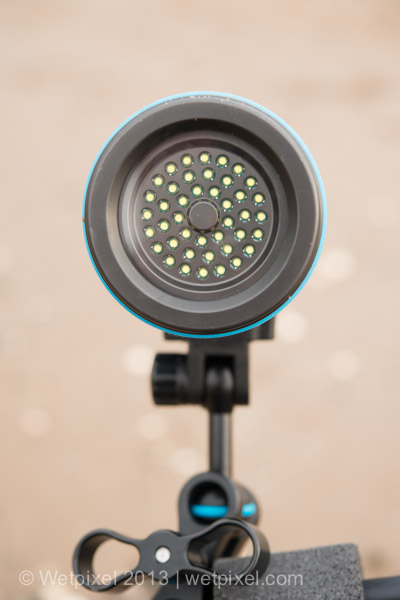
When Fisheye released the FIX Aquavolt 7000 at DEMA in 2012, this new torch seemed to offer an enhanced level of output for SLR and POV cam users. The specifications for the light include: 42 LEDs which can deliver an output of up to 7,000 lumens, a beam of 115°, 6,500-8,000°K color temperature and a depth rating of 100m.
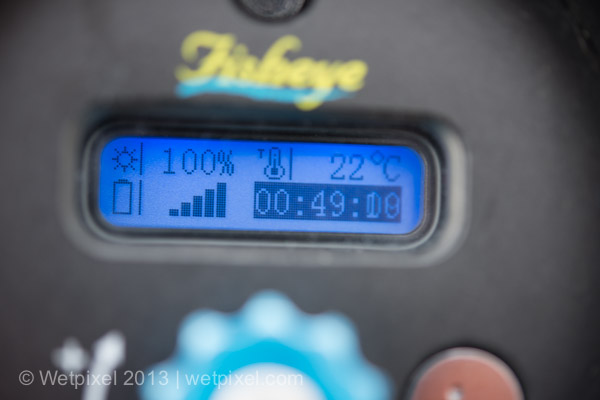
On the rear, it has an LCD display, which gives a read-out of remaining battery life, current power output and internal temperature.
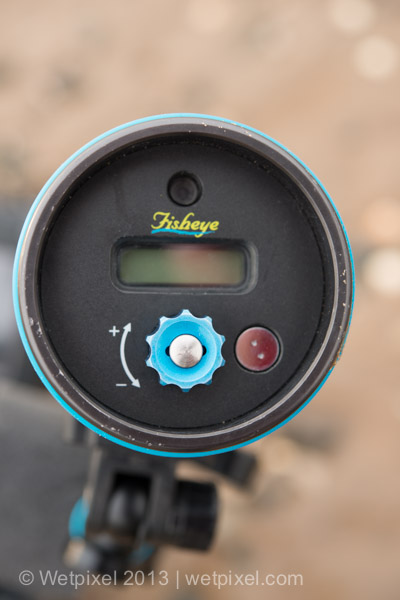
Also on the rear is the on/off push button and a dial to control output. Power is supplied by a Li-On battery, which is accessed by unscrewing the two halves of the light’s aluminum housing. The quoted burn time is 55 minutes at 100% after which the output will drop to 20% for a further 20 minutes. Charging is carried out in a separate cradle, which has 5 LED charge indicators.
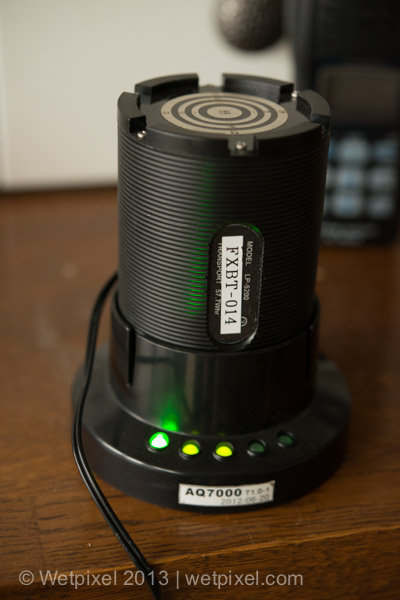
The test lights were supplied with a YS mount adaptor.
Testing and impressions.
The lights seem very well made and robust. The aluminum is anodized and seemed to be quite capable of coping with usual wear and tear. From an engineering standpoint, the lights and accessories are very beautifully machined, and the design seems sleek and refined.
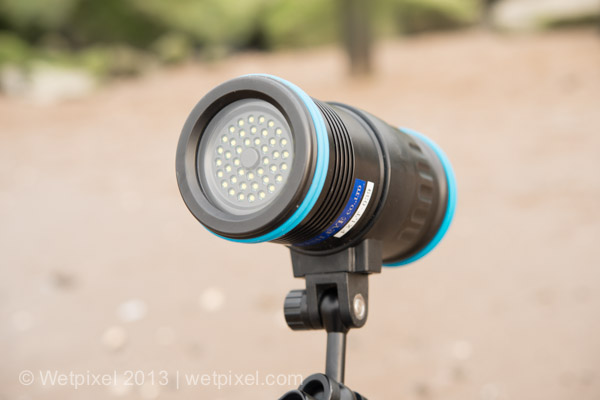
I found that the weight of these lights makes the YS mount a poor option. Whilst the 1” ball clamps are capable of holding the torch securely at a required position underwater, the YS mounts would allow the lights to drop in their vertical plane, and I found it difficult to tighten them sufficiently to hold firm.
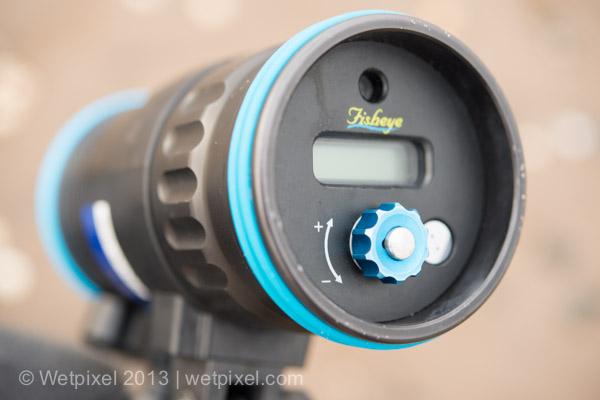
The tests were carried out in 4°C water, so big gloves were required. The output level control knob has deep grooves, but it is still difficult to access due to its proximity and rebate into light housing’s rim.
These lights put out a lot of light! Subjectively, they do seem significantly brighter than the [4000 lumen lights](http://wetpixel.com/articles/wetpixel-slr-video-light-review0 reviewed earlier. The beam has a very soft even spread with no hot spots. I think that the additional power really shows in the quality of the light when lighting up big areas. As is often the case, I found that I was able to turn the lights down somewhat, which extended the burn times, but also seemed to slightly improve the quality of the light. I find that (and this is again subjective) burning lights at 100% seems to produce a somewhat harsher light quality than the same torch at a lower output level. With the extra power of the Aquavolt 7000s, I was able to avoid this.
Burn time was recorded at an average of 57 minutes at full power over 5 cycles, with the output dropping then to 20% as described in the specifications. Battery recharge times were around 3.5 to 4 hours from fully discharged.
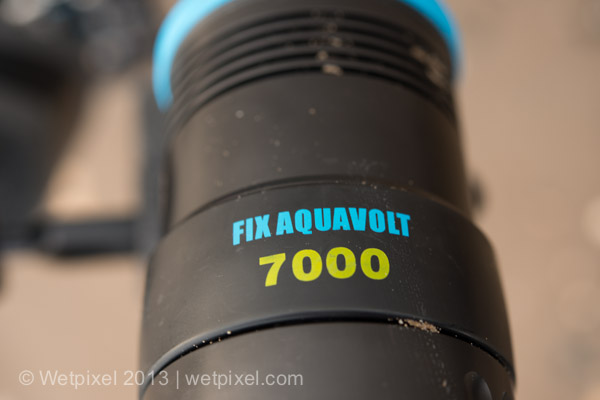
The average weights were an average of 1,190g (2.6lbs) in air and the specifications list an in-water weight of 510g (1.12lbs). Both of these include the batteries, although the travel weight would include charger cradle and transformer/plug. These would add a further approximately 300g (0.66lbs). Although it would be possible to share one charger between two torches, the recharge time would suggest that it may be better to carry one per torch.
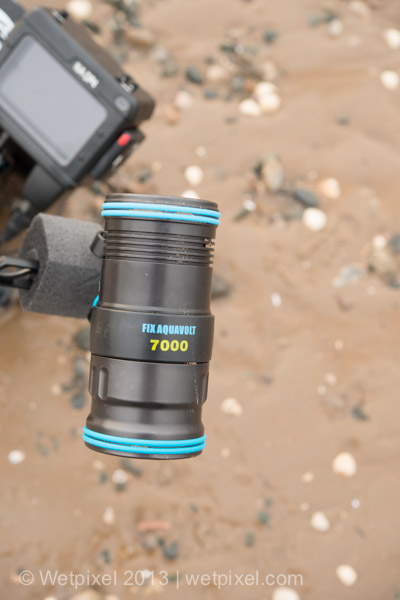
I really liked the LCD screen and the information it provided. Having a percentage output and remaining battery life in a numerical form allowed me to plan shots with more precision than would be possible with more graphical displays.
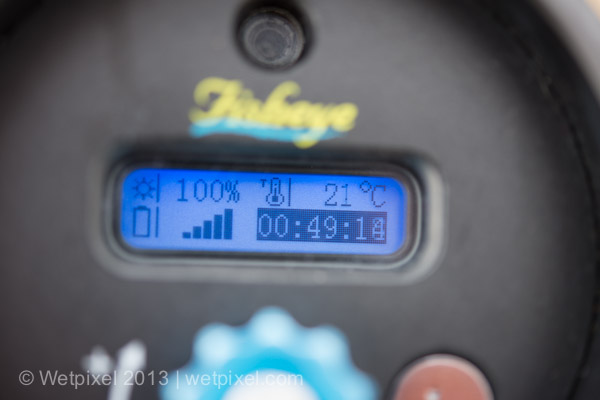
Conclusion.
The Fisheye FIX Aquavolt 7000 retails at £1,439.95, as opposed to the around £1,000 that is the price of the 4000 lumen competitors. I would suggest that for those involved in a lot of wide-angle video, or planning to use SLRs to capture video as a primary purpose, this extra expense will be justified. The output to size ratio seems unique, and they are significantly brighter than any other similar sized lights that I am currently aware of.
FTTC Disclosure.
The Fisheye Aquavolt 7000 lights were loaned by Alex Tattersall of Underwater Visions for the review. Many thanks to him and to Fisheye Japan for the loan of the lights.